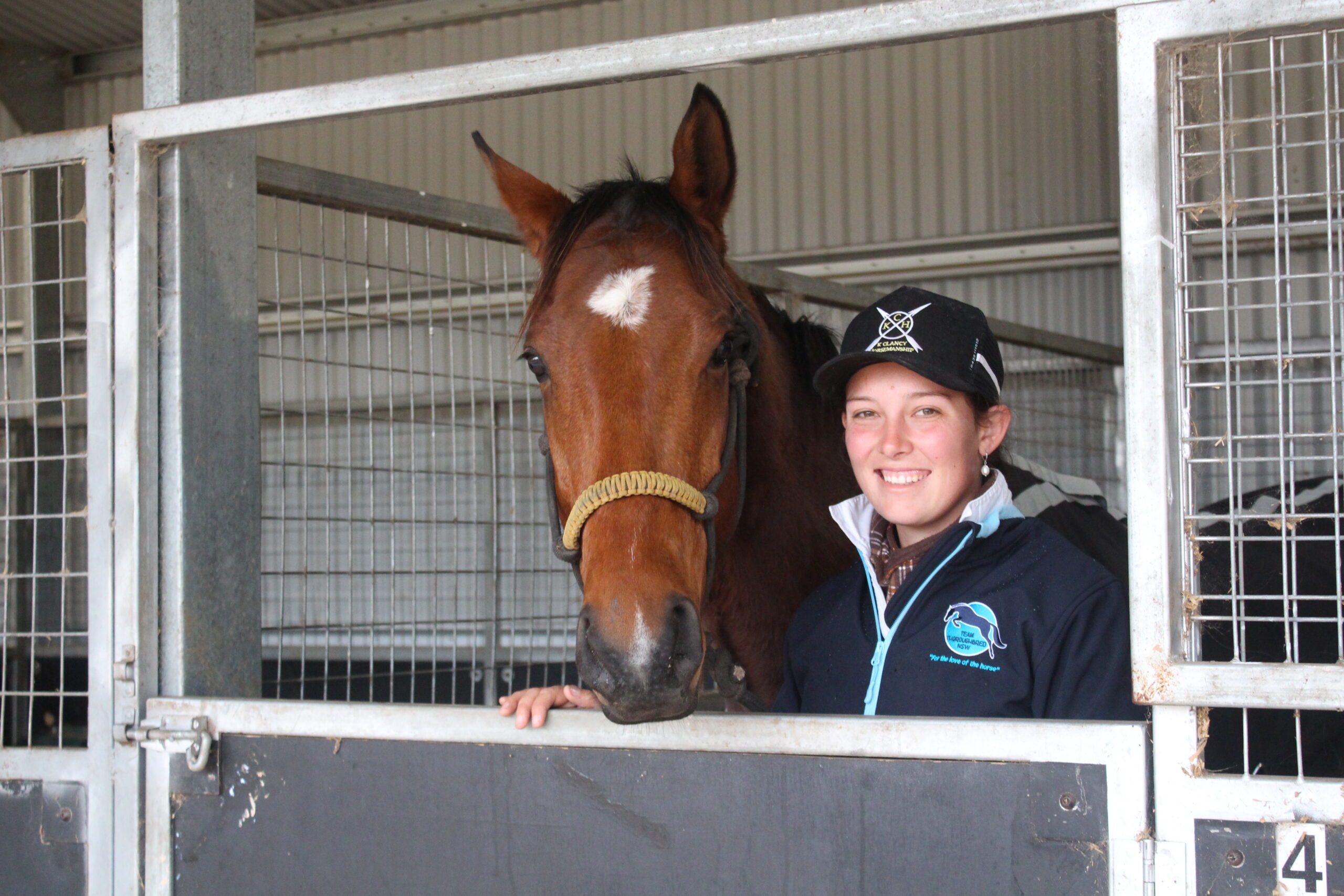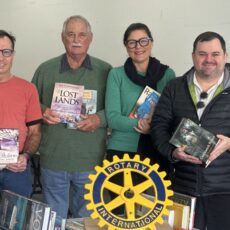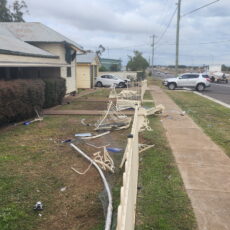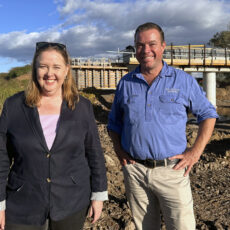As the founder of K Clancy Horsemanship, Kate Clancy has extensive experience in teaching clinics, lessons, training, campaigning and entertainment to horses all over Australia.
It’s this in-depth understanding of the industry that saw Ms Clancy selected as one of 10 horse trainers across the country competing in this year’s Racehorse to Ranch program.
The competition gives equine enthusiasts the opportunity to showcase the versatility and potential of thoroughbred horses in their post-racing career.
“We’re given a horse, straight from the track, who has completed their racing career within the last six months,” Ms Clancy explained.
“And the Racehorse to Ranch competition gives us 100 days to train the thoroughbred before going on to Kilkivan to face off against the other nine trainers and horses.”
Ms Clancy’s horse for the competition, Wingman, was gifted to her by Team Thoroughbred NSW.
On their team is her partner, Jake Bogeus, who will assist in training, caring for and travelling with the horse in the lead up to the competition.
The 100 days of training will culminate in a three-day event in Queensland, hosted by Cowgirls Gathering, which will put the horses to the test across a range of sections including ranch trail, working cowhorse and freestyle.
The ranch trail is designed to show how the horse performs in normal work-day tasks that might be asked of him – this class consists of seven obstacles and three paces: walk, trot and lope.
The working cowhorse section consists of prescribed rein work and actual cow work, with judging based on good manners, smoothness, cow sense and ease of reining.
The freestyle section, according to Ms Clancy, is to show off any unique skill your horse has.
“Whatever they can do that’s outside of the usual training so, if you can get your horse to roll over, you do that,” she said.
“Setting the challenge up across this variety of phases allows the competitors to show off the horse and trainer combination in an array of areas.”
While 100 days may not seem like a long time to get a horse competition-ready, Ms Clancy says she usually works with even shorter deadlines.
“I don’t normally have that long to train horses when they’re sent to us, so I’m glad to have Wingman here for a little extra time,” she said.
“In the lead up to Kilkivan, we’ll train him up to specialise in the competition sections and hopefully it’ll result in the best possible scores for us.”
“But for me this isn’t about winning, it’s about demonstrating the potential of thoroughbreds and allowing Wingman to live as good a life as possible in his retirement from the track.”
Ms Clancy says she’s excited to be participating in an initiative that helps better educate people on the abilities of ex-racehorses.
“It’s a great opportunity to show that these horses are capable of so much more than just racing – many people see them as animals built only for the racetrack,” she said.
“There’s a common stigma attached to thoroughbreds because they fall victim to this pigeon-holing and often people will avoid buying them for fear of them being unfit for farm life.”
“But just because they weren’t suitable for racing, doesn’t mean they should be written off altogether.”
Ms Clancy only received Wingman this month, but she’s already excited by his potential.
“He’s only three years old and he had about six starts on the racetrack but no wins,” Ms Clancy said.
“But in just a few days I’ve gotten to know him and I’ve found that, just because he isn’t racetrack material, he’s still a lovely horse.”
“The trainers who own thoroughbred racehorses treat the animals with the utmost care because, at the end of the day, that horse is an investment.”
“So even when they’re deemed unfit to race, that doesn’t undo the time their owner invested – they’ve still been raised correctly and that’s why Wingman is such a good-natured horse.”
Ms Clancy said educational initiatives like Racehorse to Ranch go hand-in-hand with the tracing of retired track stars.
“There wasn’t always this accountability for ex-racehorses, but now there’s systems in place so all horses are tracked in their retirement,” she said.
“Pairing this with awareness and education programs, such as this one, will mean more horses are going to good homes that will take care of them after they’ve quit racing.”
At over 160 centimetre tall, Wingman is quite a large horse, and Ms Clancy says he’ll keep growing.
Due to this potential, he’ll likely be sold to another rider or trainer once the competition is over.
“I’d love to keep him here because he is so well-tempered, but I just can’t give him the time that he deserves,” Ms Clancy said.
“And he’s still only young so he should go to someone who can pay him the attention he needs to continue growing and learning.”
“If he were older, I’d keep Wingman here and teach some of the school-aged kids to ride on him.”
Keep up to date with The Courier to find out how Ms Clancy and Wingman perform at Kilkivan.
Read more like this:
- Kate Clancy entertains at the Narrabri Pony Camp
- A great Galloping Gully Polocrosse Club carnival
- Local horse breeders win in Queensland











